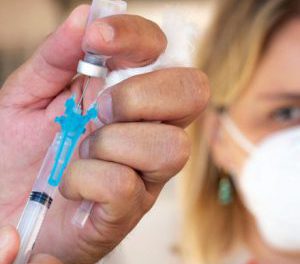Date: September 11, 2024
Source: Endocrinology Journal
A groundbreaking study published in Endocrinology, the flagship journal of the Endocrine Society, highlights a concerning trend: exposure to certain endocrine-disrupting chemicals (EDCs) may contribute to early onset puberty in girls. This alarming development is raising concerns due to its potential implications for long-term health and development.
EDCs are substances that interfere with the endocrine system, mimicking, blocking, or altering hormone functions. The study, conducted by a team led by Natalie Shaw, M.D., M.M.Sc., from the National Institute of Environmental Health Sciences (NIEHS) at the National Institutes of Health (NIH), explored how these chemicals might influence the timing of puberty.
Research Methodology and Findings
The researchers screened a comprehensive library of 10,000 environmental compounds, including pharmaceuticals, chemicals, and dietary supplements, to identify those that could trigger early puberty. The study utilized human brain cells and various animal models, including zebrafish, to assess the impact of these substances on the reproductive axis.
The team discovered that several substances, including musk ambrette and certain cholinergic agonists, might be linked to earlier onset puberty. Musk ambrette, a fragrance found in some detergents, perfumes, and personal care products, was particularly noteworthy due to its potential to cross the blood-brain barrier and stimulate key receptors in the hypothalamus. This stimulation could potentially activate the reproductive axis prematurely.
Dr. Shaw emphasized the need for further research to confirm these findings but noted that the results are concerning. “The ability of these compounds to stimulate key receptors in the hypothalamus — the gonadotropin-releasing hormone receptor (GnRHR) and the kisspeptin receptor (KISS1R) — raises the possibility that exposure may prematurely activate the reproductive axis in children,” Shaw stated.
Health Implications
Early puberty in girls has been linked to various health issues, including psychosocial problems, obesity, diabetes, cardiovascular disease, and an increased risk of breast cancer. The study’s findings underscore the urgent need for more stringent regulations and consumer awareness regarding the chemicals used in everyday products.
Regulatory Concerns and Recommendations
While Canadian and European regulations have restricted musk ambrette due to its potential toxicity, it remains available in some personal care products in the U.S. The Food and Drug Administration (FDA) has removed the fragrance from its “generally recognized as safe” list, but its presence in the market continues to be a concern.
“This study suggests that, out of an abundance of caution, it is important for parents to only use personal care products for their children that are federally regulated,” Dr. Shaw advised.
Future Directions
The study highlights the effectiveness of using human hypothalamic neurons and zebrafish models to identify environmental substances that may impact human health. Co-author Menghang Xia, Ph.D., from the National Center for Advancing Translational Sciences (NCATS), praised the study’s multidisciplinary approach, which has efficiently reduced the time and cost associated with assessing environmental chemicals.
The research was supported by NIEHS and NCATS, with contributions from experts at Northwestern University and other institutions.
As this research continues to unfold, it is clear that addressing the potential risks of EDCs is crucial for safeguarding public health, particularly for vulnerable populations like children.












